[Editor’s Note: Mad Scientist Laboratory is pleased to review Prediction Machines: The Simple Economics of Artificial Intelligence by Ajay Agrawal, Joshua Gans, and Avi Goldfarb, Harvard Business Review Press, 17 April 2018. While economics is not a perfect analog to warfare, this book will enhance our readers’ understanding of narrow Artificial Intelligence (AI) and its tremendous potential to change the character of future warfare by disrupting human-centered battlefield rhythms and facilitating combat at machine speed.]
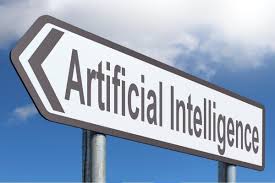 This insightful book by economists Ajay Agrawal, Joshua Gans, and Avi Goldfarb penetrates the hype often associated with AI by describing its base functions and roles and providing the economic framework for its future applications. Of particular interest is their perspective of AI entities as prediction machines. In simplifying and de-mything our understanding of AI and Machine Learning (ML) as prediction tools, akin to computers being nothing more than extremely powerful mathematics machines, the authors effectively describe the economic impacts that these prediction machines will have in the future.
This insightful book by economists Ajay Agrawal, Joshua Gans, and Avi Goldfarb penetrates the hype often associated with AI by describing its base functions and roles and providing the economic framework for its future applications. Of particular interest is their perspective of AI entities as prediction machines. In simplifying and de-mything our understanding of AI and Machine Learning (ML) as prediction tools, akin to computers being nothing more than extremely powerful mathematics machines, the authors effectively describe the economic impacts that these prediction machines will have in the future.
The book addresses the three categories of data underpinning AI / ML:
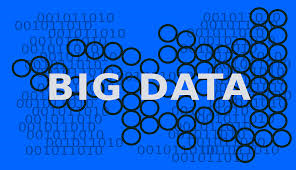 Training: This is the Big Data that trains the underlying AI algorithms in the first place. Generally, the bigger and most robust the data set is, the more effective the AI’s predictive capability will be. Activities such as driving (with millions of iterations every day) and online commerce (with similar large numbers of transactions) in defined environments lend themselves to efficient AI applications.
Training: This is the Big Data that trains the underlying AI algorithms in the first place. Generally, the bigger and most robust the data set is, the more effective the AI’s predictive capability will be. Activities such as driving (with millions of iterations every day) and online commerce (with similar large numbers of transactions) in defined environments lend themselves to efficient AI applications.
Input: This is the data that the AI will be taking in, either from purposeful, active injects or passively from the environment around it. Again, defined environments are far easier to cope with in this regard.
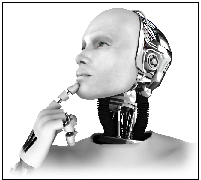 Feedback: This data comes from either manual inputs by users and developers or from AI understanding what effects took place from its previous applications. While often overlooked, this data is critical to iteratively enhancing and refining the AI’s performance as well as identifying biases and askew decision-making. AI is not a static, one-off product; much like software, it must be continually updated, either through injects or learning.
Feedback: This data comes from either manual inputs by users and developers or from AI understanding what effects took place from its previous applications. While often overlooked, this data is critical to iteratively enhancing and refining the AI’s performance as well as identifying biases and askew decision-making. AI is not a static, one-off product; much like software, it must be continually updated, either through injects or learning.
The authors explore narrow AI rather than a general, super, or “strong” AI. Proclaimed Mad Scientist Paul Scharre and Michael Horowitz define narrow AI as follows:
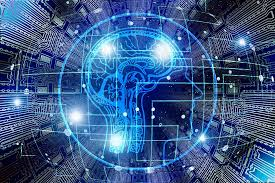 “… their expertise is confined to a single domain, as opposed to hypothetical future “general” AI systems that could apply expertise more broadly. Machines – at least for now – lack the general-purpose reasoning that humans use to flexibly perform a range of tasks: making coffee one minute, then taking a phone call from work, then putting on a toddler’s shoes and putting her in the car for school.” – from Artificial Intelligence What Every Policymaker Needs to Know, Center for New American Security, 19 June 2018
“… their expertise is confined to a single domain, as opposed to hypothetical future “general” AI systems that could apply expertise more broadly. Machines – at least for now – lack the general-purpose reasoning that humans use to flexibly perform a range of tasks: making coffee one minute, then taking a phone call from work, then putting on a toddler’s shoes and putting her in the car for school.” – from Artificial Intelligence What Every Policymaker Needs to Know, Center for New American Security, 19 June 2018
These narrow AI applications could have significant implications for U.S. Armed Forces personnel, force structure, operations, and processes. While economics is not a direct analogy to warfare, there are a number of aspects that can be distilled into the following ramifications:
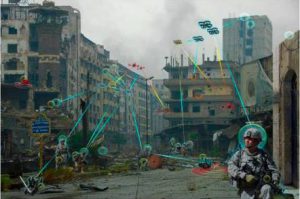
1. The battlefield is dynamic and has innumerable variables that have great potential to mischaracterize the ground truth with limited, purposely subverted, or “dirty” input data. Additionally, the relative short duration of battles and battlefield activities means that AI would not receive consistent, plentiful, and defined data, similar to what it would receive in civilian transportation and economic applications.
 2. The U.S. military will not be able to just “throw AI on it” and achieve effective results. The effective application of AI will require a disciplined and comprehensive review of all warfighting functions to determine where AI can best augment and enhance our current Soldier-centric capabilities (i.e., identify those workflows and processes – Intelligence and Targeting Cycles – that can be enhanced with the application of AI). Leaders will also have to assess where AI can replace Soldiers in workflows and organizational architecture, and whether AI necessitates the discarding or major restructuring of either. Note that Goldman-Sachs is in the process of conducting this type of self-evaluation right now.
2. The U.S. military will not be able to just “throw AI on it” and achieve effective results. The effective application of AI will require a disciplined and comprehensive review of all warfighting functions to determine where AI can best augment and enhance our current Soldier-centric capabilities (i.e., identify those workflows and processes – Intelligence and Targeting Cycles – that can be enhanced with the application of AI). Leaders will also have to assess where AI can replace Soldiers in workflows and organizational architecture, and whether AI necessitates the discarding or major restructuring of either. Note that Goldman-Sachs is in the process of conducting this type of self-evaluation right now.
 3. Due to its incredible “thirst” for Big Data, AI/ML will necessitate tradeoffs between security and privacy (the former likely being more important to the military) and quantity and quality of data.
3. Due to its incredible “thirst” for Big Data, AI/ML will necessitate tradeoffs between security and privacy (the former likely being more important to the military) and quantity and quality of data.
 4. In the near to mid-term future, AI/ML will not replace Leaders, Soldiers, and Analysts, but will allow them to focus on the big issues (i.e., “the fight”) by freeing them from the resource-intensive (i.e., time and manpower) mundane and rote tasks of data crunching, possibly facilitating the reallocation of manpower to growing need areas in data management, machine training, and AI translation.
4. In the near to mid-term future, AI/ML will not replace Leaders, Soldiers, and Analysts, but will allow them to focus on the big issues (i.e., “the fight”) by freeing them from the resource-intensive (i.e., time and manpower) mundane and rote tasks of data crunching, possibly facilitating the reallocation of manpower to growing need areas in data management, machine training, and AI translation.
This book is a must-read for those interested in obtaining a down-to-earth assessment on the state of narrow AI and its potential applications to both economics and warfare.
If you enjoyed this review, please also read the following Mad Scientist Laboratory blog posts:
Takeaways Learned about the Future of the AI Battlefield
Leveraging Artificial Intelligence and Machine Learning to Meet Warfighter Needs
… and watch the following presentations from the Mad Scientist Robotics, AI, and Autonomy – Visioning Multi-Domain Battle in 2030-2050 Conference, 7-8 March 2017, co-sponsored by Georgia Tech Research Institute:
Artificial Intelligence and Machine Learning: Potential Application in Defense Today and Tomorrow,” presented by Mr. Louis Maziotta, Armament Research, Development, and Engineering Center (ARDEC).
Unmanned and Autonomous Systems, presented by Paul Scharre, CNAS.

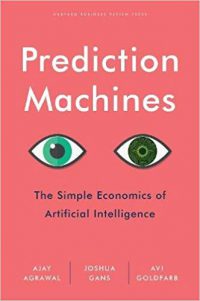

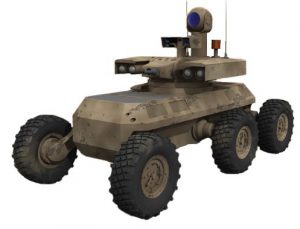 (ML) and their use in enabling lethal autonomy on the battlefield. While this is an important topic, AI’s potential application is much broader and farther, enabling future warfare at machine speed and disrupting human-centered battlefield rhythms.
(ML) and their use in enabling lethal autonomy on the battlefield. While this is an important topic, AI’s potential application is much broader and farther, enabling future warfare at machine speed and disrupting human-centered battlefield rhythms.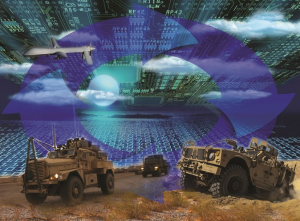 AI will be so pervasive across the battlefield that most of its functions and processes will take place without warfighters and commanders noticing. There won’t be an On/Off button per se, similar to cellular service, smart device functions, or cyber operations. The wide proliferation of AI entities from devices to platforms to even wearables means it will not be an isolated domain, but rather will permeate ubiquitously and seamlessly across the battlefield.
AI will be so pervasive across the battlefield that most of its functions and processes will take place without warfighters and commanders noticing. There won’t be an On/Off button per se, similar to cellular service, smart device functions, or cyber operations. The wide proliferation of AI entities from devices to platforms to even wearables means it will not be an isolated domain, but rather will permeate ubiquitously and seamlessly across the battlefield.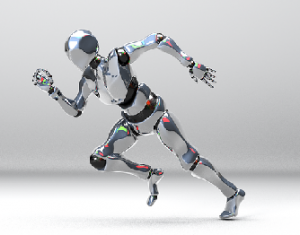 AI will not only speed up existing processes and cycles – i.e., the military decision-making process (MDMP), the intelligence cycle, the targeting cycle – but it will also likely transform them. Many of these cycles and processes have evolved and proven their effectiveness in a human-centric environment. Some contain consecutive steps that may no longer be necessary when tasks are assigned to intelligent machines. Critical, time-sensitive, but often tedious work that is carried out by hundreds of military staff members in many hours could be accomplished in minutes by AI, leading to flattened command structures, smaller staffs, and significant demand and signature reduction on the battlefield. All of this will result in battlefield optimization and will induce hyperactivity in combat – rapidly changing battlefield rhythms.
AI will not only speed up existing processes and cycles – i.e., the military decision-making process (MDMP), the intelligence cycle, the targeting cycle – but it will also likely transform them. Many of these cycles and processes have evolved and proven their effectiveness in a human-centric environment. Some contain consecutive steps that may no longer be necessary when tasks are assigned to intelligent machines. Critical, time-sensitive, but often tedious work that is carried out by hundreds of military staff members in many hours could be accomplished in minutes by AI, leading to flattened command structures, smaller staffs, and significant demand and signature reduction on the battlefield. All of this will result in battlefield optimization and will induce hyperactivity in combat – rapidly changing battlefield rhythms.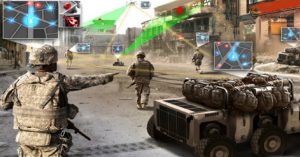 The future battlefield will be increasingly complex with the cyber, air, and space domains, as well as electromagnetic spectrum becoming difficult to see, manage, and deconflict. Exacerbating this problem is the enormous growth of the Internet of Things – eventually the Internet of Everything – and even more importantly, the Internet of Battlefield Things. AI will be critical in processing and sustaining a clear COP in this overwhelmingly data-rich environment of sensors, emitters, systems, and networks.
The future battlefield will be increasingly complex with the cyber, air, and space domains, as well as electromagnetic spectrum becoming difficult to see, manage, and deconflict. Exacerbating this problem is the enormous growth of the Internet of Things – eventually the Internet of Everything – and even more importantly, the Internet of Battlefield Things. AI will be critical in processing and sustaining a clear COP in this overwhelmingly data-rich environment of sensors, emitters, systems, and networks.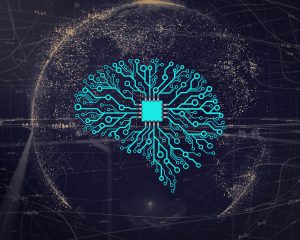 AI will facilitate a host of new learning things on the battlefield – i.e., weapon systems, munitions, vehicles, wearables [exo-skeletons] – and a multitude of collaborative entities – sensors, systems, and platforms. This battlespace of learning things will not supplant our need for Soldiers that use and operate them, but it will enhance them as Warfighters.
AI will facilitate a host of new learning things on the battlefield – i.e., weapon systems, munitions, vehicles, wearables [exo-skeletons] – and a multitude of collaborative entities – sensors, systems, and platforms. This battlespace of learning things will not supplant our need for Soldiers that use and operate them, but it will enhance them as Warfighters. In order to effectively utilize AI across the battlefield, the Army will need resilient and layered AI, including on-board services, localized collaborative systems, and cloud services that do not rely on persistent connectivity. Some AI entities will need to be proliferated at the tactical level, creating a veritable network that can still effectively operate with degraded/disrupted nodes.
In order to effectively utilize AI across the battlefield, the Army will need resilient and layered AI, including on-board services, localized collaborative systems, and cloud services that do not rely on persistent connectivity. Some AI entities will need to be proliferated at the tactical level, creating a veritable network that can still effectively operate with degraded/disrupted nodes.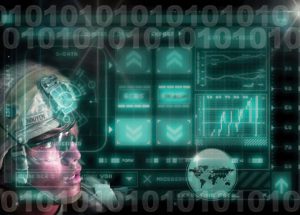 The advent of AI across the battlefield will require a multitude of new capabilities and skillsets to implement, maintain, and maximize AI entities. As with the contemporary drive to recruit Cyber talent into the ranks, the Army must plan on competing with the private sector for the most talented and capable recruits in new AI job fields.
The advent of AI across the battlefield will require a multitude of new capabilities and skillsets to implement, maintain, and maximize AI entities. As with the contemporary drive to recruit Cyber talent into the ranks, the Army must plan on competing with the private sector for the most talented and capable recruits in new AI job fields. A capability / vulnerability paradox is inherent with AI, with its machine speed capabilities being vulnerable to the vast array of data input sources that it needs to operate. AI’s underpinning data and algorithms are vulnerable to spoofing, degradation, or other forms of subversion. This could lead to the erosion of Soldier and Leader trust in AI, and also necessitates more transparency to strengthen the man-machine relationship. Enemies will seek to exploit this relationship and trust.
A capability / vulnerability paradox is inherent with AI, with its machine speed capabilities being vulnerable to the vast array of data input sources that it needs to operate. AI’s underpinning data and algorithms are vulnerable to spoofing, degradation, or other forms of subversion. This could lead to the erosion of Soldier and Leader trust in AI, and also necessitates more transparency to strengthen the man-machine relationship. Enemies will seek to exploit this relationship and trust.
 Mad Scientist is extremely appreciative of all the feedback and submissions received. We intend for this product to be used in future wargaming events, future horizon scanning, and the general framing of future thinking and planning for the development and use of AI systems and entities.
Mad Scientist is extremely appreciative of all the feedback and submissions received. We intend for this product to be used in future wargaming events, future horizon scanning, and the general framing of future thinking and planning for the development and use of AI systems and entities.